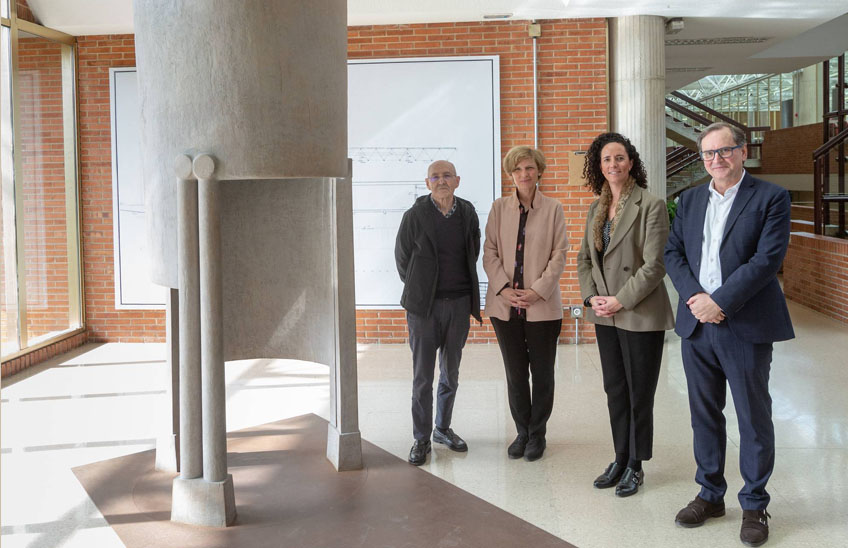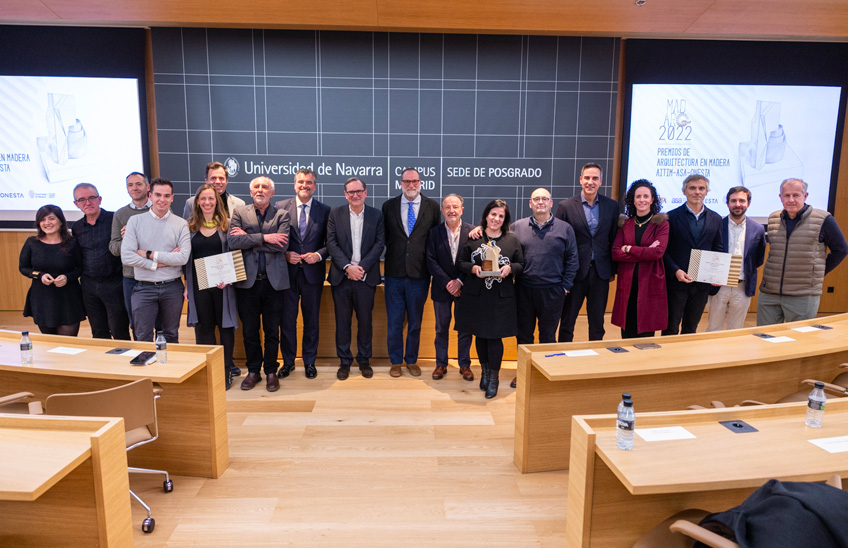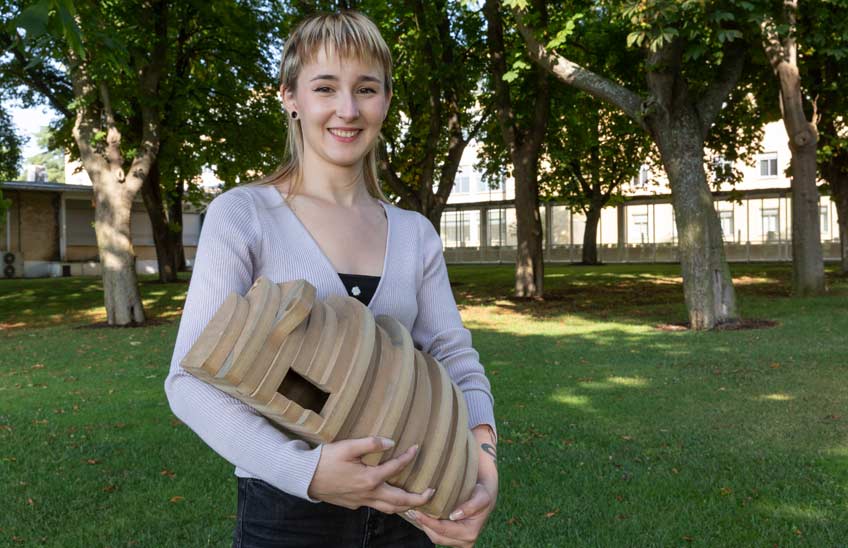A new tool financial aid to architects, builders and developers to assess the environmental benefits of wood construction.
It is a partnership between the Chair Madera of the University and the association Ademan on the framework of a project of the Government of Navarre.

FotoManuelCastells/Teachers Joaquín Torres and Purificación González at School of Architecture
13 | 01 | 2021
A group of professors from the School of Architecture of the University of Navarra, integrated in the Chair Woodhas created a new tool to evaluate, in a simple way, the environmental advantages of the use of wood in buildings at the pre-project stage. This is a project promoted by ADEMAN in the framework of the Government of Navarre's strategy for the promotion of wood within the business fabric of the region.
The work has been developed by the School's professors and researchers Purificación González, Joaquín Torres and Nerea Arriazu. Its goal -once the Username enters a series of data in an excel table choosing between the different construction alternatives- consists of generating an initial evaluation with the CO2eq emissions per square metre built for the use of housing or other uses, both for each construction system chosen and for the building as a whole. In addition, the output values are compared with two buildings subject: the wooden reference letter and the "standard" construction.
The first, the " reference letter wood building", uses wood in all possible construction elements: wooden portico structure, ventilated façade cladding of wooden boards; wooden carpentry; façade, roof and floor insulation in contact with ground or heated premises, in wood fibre; ceramic wet rooms and the rest of the premises in multilayer floating parquet flooring; and interior wall cladding in tiles (wet rooms) or wooden board (rest of the premises).
In contrast, the standard building at reference letter uses the most common elements in today's construction methods: concrete structure, ventilated façade cladding in porcelain stoneware ceramic; aluminium frames with thermal break; façade, roof and floor insulation at contact with mineral wool heating; ceramic or laminated flooring; and interior tiling or painting.
Greenhouse gases emitted by the products
According to its authors, the new tool "does not seek to obtain the value of the so-called carbon footprint of a building, but to establish parameters for reference letter by analysing those construction elements in which the use of wood is common, such as the structure, ventilated façade cladding, interior wall cladding, flooring, carpentry and insulation".
"It is also not a full life cycle analysis of products, but focuses on the early stages and assessment of a single mid-point impact category: the total greenhouse gas (GHG) emissions emitted by direct or indirect effects of products", the 3 experts add.
For the design of the tool, the authors - professors and researchers of the School of Architecture of the University of Navarra - have used different instructions of data and resources such as ICE Inventory of Carbon & Energy of the University of Bath, technical documentation of manufacturers, environmental product declarations (EPD), together with their own knowledge.




